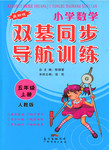
【题目】Most mornings, the line begins to form at dawn:scores of silent women with babies on their backs,buckets balanced on their heads, and in each hand a bright-blue plastic jug. On good days, they will wait less than an hour before a water tanker goes across the dirt path that serves as a road in KesumPurbahari, a slum on the southern edge of New Delhi. On bad days, when there is no electricity for the pumps, the tankers don't come at all. “That water kills people, w a young mother named Shoba said one recent Saturday morning, pointing to a row of pails filled with thick, caramel-colored liquid. "Whoever drinks it will die. ” The water was from a pipe shared by thousands of people in the poor neighbourhood.
Women often use it to wash clothes and bathe their children, but nobody is desperate enough to drink it.
There is no standard for how much water a per-son needs each day, but experts usually put the mini-mum at fifty litres. The government of India promises (but rarely provides) forty. Most people drink two or three litres—less than it takes to flush a toilet. The rest is typically used for cooking and bathing. Americans consume between four hundred and six hundred litres of water each day, more than any other people on earth. Most Europeans use less than half that. The women of KesumPurbahari each hoped to drag away a hundred litres that day—two or three buckets' worth. Shoba has a husband and five children, and that much water doesn't go far in a family of seven, particularly when the temperature reaches a hundred and ten degrees before noon. She often makes up the difference with bottled water, which costs more than water delivered any other way. Sometimes she just buys milk; it's cheaper. Like the poorest people everywhere, the people of New Delhi's slums spend a far greater percentage of their incomes on water than anyone lucky enough to live in a house connected to a municipal system of pipes.
【1】 The underlined word “slum” most likely means __________
A. a village
B. a small town
C. an area of a town with badly-built, over-crowded buildings
D. the part of a town that lacks water badly
【2】 Sometimes the water tanker doesn't come because __________.
A. the weather is bad
B. there is no electricity
C. there is no water
D. people don't want the dirty water
【3】 Which of the following statements is wrong?
A. A hundred litres of water a day is enough for Shoba's family.
B. Americans uses the largest amount of water each day.
C. InKesumPurbahari milk is cheaper than bottled water.
D. Shoba has a family of seven people.
【4】 The passage mainly tells us __________.
A. how women in KesumPurbahari gets their water
B. how much water a day a person needs
C. that India lacks water badly
D. how India government manages to solve the problem of water
【答案】【1】 C
【2】 B
【3】 A
【4】 C
【解析】【1】词义猜测题。A、B、D三项可以指贫穷地区,也可以指富裕地区,但根据第一段第二句话及第二段的最后一句话可以知道slum指的更可能是贫穷地区,C项比较接近这个意思,因此应该是最佳答案。
【2】细节理解题。根据第一段第三句话“On bad days, when there is no electricity for the pumps, the tankers don't come at all. ”可知B项正确。
【3】细节理解题。根据第二段第八句话“Shoba has a husband and five children, and that much water doesn't go far in a family of seven, particularly when the temperature reaches a hundred and ten degrees before noon. ”可判断 A 项不符合文意,而其他选项均可在文中找到支持信息。
【4】主旨大意题。根据短文内容可知C项正确。A、B两项是细节信息,用于衬托印度缺水的现象;D项则完全与文章的意思相反,因此也可排除。


 开心练习课课练与单元检测系列答案
开心练习课课练与单元检测系列答案 开心试卷期末冲刺100分系列答案
开心试卷期末冲刺100分系列答案 双基同步导航训练系列答案
双基同步导航训练系列答案科目:高中地理 来源: 题型:
【题目】Do you wake up every morning __________ energetic and ready to start a new day?
A. feel
B. to feel
C. feeling
D. felt
查看答案和解析>>
科目:高中地理 来源: 题型:
【题目】下列词语中加点的字,读音全正确的一项是
A.坍缩(tān) 拱券(quàn) 蔓延(màn) 未雨绸缪(móu)
B.混沌(dùn) 霎时(shà) 纤夫(qiàn) 博闻强识(shì)
C.羸弱(léi) 贮存(zhù) 估量(liáng) 量入为出(liàng)
D.毗邻(pí) 谙熟(ān) 模样(mó) 模棱两可(mó)
查看答案和解析>>
科目:高中地理 来源: 题型:
【题目】依次填入横线处的词语,最恰当的一组是
①建筑之始,产生于实际需要,________于自然物理,非着意创制形式,更无所谓派别。
②最初有赖于西方学者先开________研究之风,继而社会对建筑之态度渐改,愈增其了解焉。
③中国建筑历史之研究尚有待于将来建筑考古方面_______调查种种之努力。
A.受治 考查 发掘 B.受制 考察 发掘
C.受制 考查 挖掘 D.受治 考察 挖掘
查看答案和解析>>
科目:高中地理 来源: 题型:
【题目】The dam was not strong enough to __________ thefloods.
A. hold back
B. hold up
C. hold on
D. hold out
查看答案和解析>>
科目:高中地理 来源: 题型:
【题目】- Do you regret ______ up your opinion that every child should take part in service learning?
- No. On the contrary, I think it is very necessary.
A. bringing
B. to bring
C. to be brought
D. being brought
查看答案和解析>>
湖北省互联网违法和不良信息举报平台 | 网上有害信息举报专区 | 电信诈骗举报专区 | 涉历史虚无主义有害信息举报专区 | 涉企侵权举报专区
违法和不良信息举报电话:027-86699610 举报邮箱:58377363@163.com